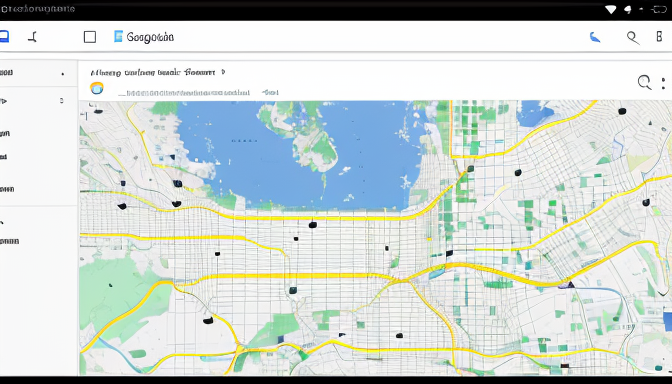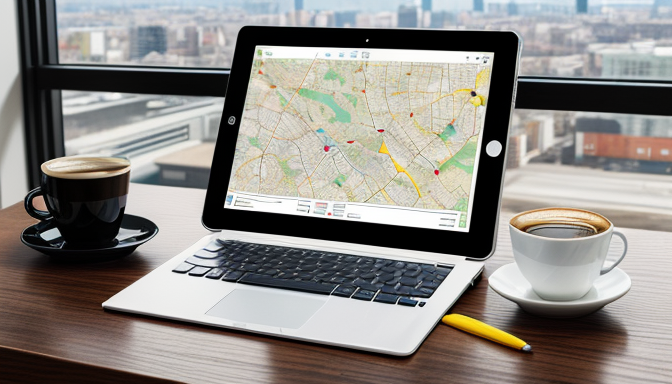
In today’s digital age, the ability to gather data is a powerful tool. But with great power comes great responsibility. Scraping Google Maps data ethically is not just a buzzword; it’s a necessity. You want to harness the wealth of information available on Google Maps without crossing any legal or ethical lines. So, how do you do it? Let’s dive in!
First off, understanding the legal frameworks surrounding data collection is crucial. Google has strict Terms of Service that dictate how their data can be used. Violating these terms could lead to legal action or getting banned from the platform. So, what are the best practices to ensure compliance while scraping Google Maps data?
One effective approach is to utilize the official Google Maps API. This tool allows you to access a wealth of data, including location details, reviews, and images, all while staying within the legal boundaries. By using the API, you can:
- Access real-time data
- Ensure compliance with Google’s guidelines
- Gather data without risking penalties
Another key aspect of scraping data ethically is transparency. If you plan to use Google Maps data for business purposes, make sure to inform your users. It builds trust and keeps your operations above board. Think of it this way: would you want someone to use your data without your knowledge? Most likely not.
When you scrape Google Maps data ethically, you open doors to numerous applications. For instance, businesses can analyze customer reviews to improve their services. Or, they can identify popular locations for targeted marketing campaigns. The insights gained from this data can drive decision-making processes and boost customer engagement.
In conclusion, scraping Google Maps data ethically is not just about following rules. It’s about being responsible and respectful. The more you understand the legal landscape, the better you can navigate it. Remember, scraping Google Maps data ethically is not just a task; it’s a commitment to integrity in your business practices.

Gather Google Maps Data Legally
When it comes to gathering data from Google Maps, the first thing you need to remember is to do it legally. Why? Because, not adhering to legal standards can land you in hot water. Google has strict terms of service regarding how its data can be used. So, understanding these guidelines is crucial.
First off, let’s talk about the legal frameworks. Google Maps data is protected, and scraping it without permission could violate copyright laws. You wouldn’t want someone taking your hard work, right? The same applies here. Always read through the Google Maps Platform Terms of Service before diving in. This document outlines what you can and cannot do with the data.
One of the best practices for gathering Google Maps data legally is to use the official APIs provided by Google. These APIs allow you to access a wealth of information while staying compliant with legal standards. For instance, the Places API lets you gather details about local businesses, points of interest, and much more. It’s like having a treasure chest of data at your fingertips, all while playing by the rules.
Another important aspect is to be transparent about your data usage. If you’re collecting data for a specific purpose, make sure to inform your users. This can build trust and ensure that you’re not stepping on any toes. Think of it this way: would you want someone using your data without your knowledge? Probably not!
Here are some quick tips to keep in mind when gathering Google Maps data:
- Always use Google’s official APIs. This way, you’re in the clear.
- Read the terms of service. It’s like reading the fine print before signing a contract.
- Be transparent. Let users know how their data will be used.
- Respect user privacy. Always prioritize the privacy of individuals.
In summary, gathering Google Maps data legally isn’t just about avoiding trouble. It’s about building a foundation of trust and integrity in your data practices. When you follow the rules, you not only protect yourself but also create a more ethical landscape for everyone involved. So, as you embark on your data-gathering journey, keep the principles of legality and ethics at the forefront. This will ensure that your efforts lead to valuable insights without any legal hiccups.

Utilize Google Maps Data for Insights
When it comes to utilizing Google Maps data, the potential is immense. Imagine having a treasure trove of information right at your fingertips! Businesses can tap into this data to uncover insights that can transform their operations. But how do you make sense of it all? Let’s dive in.
First off, Google Maps data isn’t just about locations. It’s about understanding customer behavior. For instance, by analyzing foot traffic patterns, businesses can identify peak hours and adjust staffing accordingly. This means happier customers and better service. Who wouldn’t want that?
Moreover, local SEO can benefit significantly from Google Maps data. By knowing where potential customers are searching from, businesses can optimize their online presence. This can lead to increased visibility in local search results. Think about it: if your business shows up when someone is looking for services nearby, you’re already a step ahead.
Another exciting aspect is competition analysis. With Google Maps data, you can see where competitors are located and how they are performing. This information can guide your marketing strategies. You can ask yourself questions like:
- What are my competitors doing right?
- Is there a gap in the market I can fill?
By answering these questions, you’re not just reacting—you’re strategizing. This proactive approach can set you apart in a crowded marketplace.
Furthermore, businesses can leverage Google Maps data to enhance their customer engagement. For example, restaurants can analyze reviews and ratings to improve their menus or service. A simple change based on customer feedback can lead to a surge in positive reviews. And we all know how powerful word-of-mouth can be!
To make this clearer, let’s look at a table that summarizes how Google Maps data can be utilized:
| Application | Benefit |
|---|---|
| Foot Traffic Analysis | Optimize staffing and improve customer service. |
| Local SEO Optimization | Increase visibility in local searches. |
| Competition Analysis | Identify market gaps and strategize effectively. |
| Customer Engagement | Enhance offerings based on feedback. |
In conclusion, the insights derived from Google Maps data are invaluable. They can guide decisions, enhance customer experiences, and ultimately drive growth. So, are you ready to harness the power of your data? The journey begins with understanding how to use it wisely. Remember, the more you know, the better you can serve your customers!

Study Google Maps Data Patterns
Understanding the patterns in Google Maps data is like uncovering a treasure map. It reveals hidden gems about consumer behavior, market trends, and geographical insights. But how do we actually study these patterns? Let’s dive into it.
First off, gathering data is just the beginning. Once you have the data, the real fun starts. You can analyze it to find trends. For instance, do certain restaurants get more traffic on weekends? Or do specific areas see a spike in visitors during holidays? These insights can help businesses make better decisions.
To get a clearer picture, consider the following methods for analyzing Google Maps data patterns:
- Heat Maps: Visual tools that show where people are most active. They can highlight busy areas and help businesses decide where to set up shop.
- Time Series Analysis: This method looks at how data changes over time. It can reveal seasonal trends, like when ice cream shops see a surge in customers during summer.
- Comparative Analysis: By comparing different locations, businesses can see what works and what doesn’t. For example, why does one coffee shop thrive while another struggles just a few blocks away?
But why does this matter? Well, when businesses tap into these insights, they can tailor their marketing strategies. Imagine knowing when your customers are most likely to visit. You could send out promotions just in time to catch their attention!
Moreover, analyzing Google Maps data can help cities and planners too. They can identify where to build new roads or parks based on traffic patterns and population density. This kind of data-driven decision-making leads to smarter urban planning.
In summary, studying Google Maps data patterns is essential for both businesses and city planners. By understanding these trends, we can make informed decisions that benefit everyone. The potential is vast, and the insights are invaluable. So, whether you’re a small business owner or a city planner, don’t overlook the power of Google Maps data. It’s not just about locations; it’s about understanding the world around us.
Frequently Asked Questions
- Is it legal to scrape Google Maps data?
While scraping data can be tempting, it’s essential to understand that Google has strict terms of service. Always check their guidelines to ensure you’re complying with legal standards. Using APIs provided by Google can often be a safer and legal alternative.
- What are the best practices for gathering data from Google Maps?
To gather data ethically, consider using the official Google Maps API. This allows you to access data without violating terms of service. Also, always respect user privacy and avoid collecting personal information without consent.
- How can businesses benefit from Google Maps data?
Businesses can leverage Google Maps data to gain insights into customer behavior, enhance local SEO, and improve engagement strategies. By analyzing location trends, companies can make informed decisions that align with customer needs.
- What types of insights can be derived from Google Maps data?
Insights can range from understanding customer foot traffic to identifying popular locations and trends. This information can help businesses tailor their services and marketing strategies to better meet consumer demands.
- How do I identify patterns in Google Maps data?
Analyzing data over time can reveal significant patterns. Look for trends in customer visits, peak hours, and popular destinations. Tools like data visualization software can help illustrate these patterns effectively.
- Can I use Google Maps data for research purposes?
Yes, as long as you’re adhering to ethical guidelines and legal standards. Make sure to use the data responsibly and credit Google Maps appropriately in your research.



